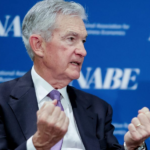A rush of big, bold mergers and acquisitions is lifting dealmakers in an otherwise slower-than-expected market for getting transactions off the ground.
Bankers say the numbers exhibit a continuing release of pent-up demand for transformative M&A among corporate decision makers, who were stifled earlier this year as trade uncertainty emanating from the US roiled markets. But beyond headline-grabbing transactions, actual deal-flow has been flat — a sign that barriers linked to trade and geopolitics remain in place.
This is proving easier for some than others, with the Bloomberg-compiled data showing that the actual number of transactions announced this year is up less than 0.5% compared with this point 12 months ago. M&A advisers point to a range of persistent challenges for smaller companies, including macroeconomic volatility, political instability and a sluggish rate of interest rate cuts.
Meanwhile, cross-boarder transactions account for 34% of total deal numbers this year, according to the Bloomberg-compiled data. That’s one of the lowest levels for more than a decade.
Even before Monday’s monster Electronic Arts buyout — the largest of all time — private equity firms had showed themselves just as willing to write big checks during the third quarter.
“I do not think we will see a tsunami of deals happen next quarter but rather a slow burn upwards in the market for sponsor exits,” said Miles at Morgan Stanley. “Given the number of companies that need to get sold, this should last for the next couple of years.”
Méchain at Goldman Sachs said that the message from private equity investors has been clear: they want money back before committing to new funds. This, she said, would force private equity firms to get creative on the sale of assets.
“There are close to 1,000 companies worth more than €1 billion valuation with average private equity ownership above six years,” Méchain said. “In this context, LP investors are applying pressure to get some of their capital back before redeploying.”









